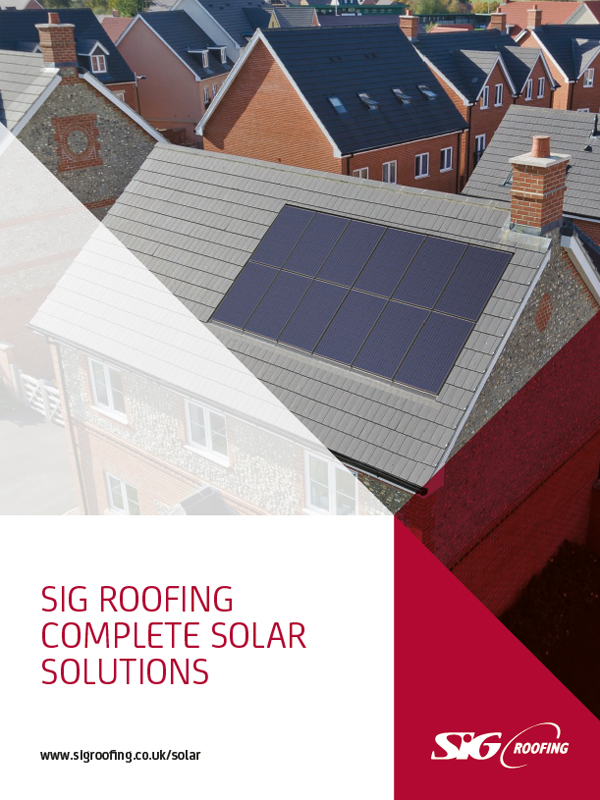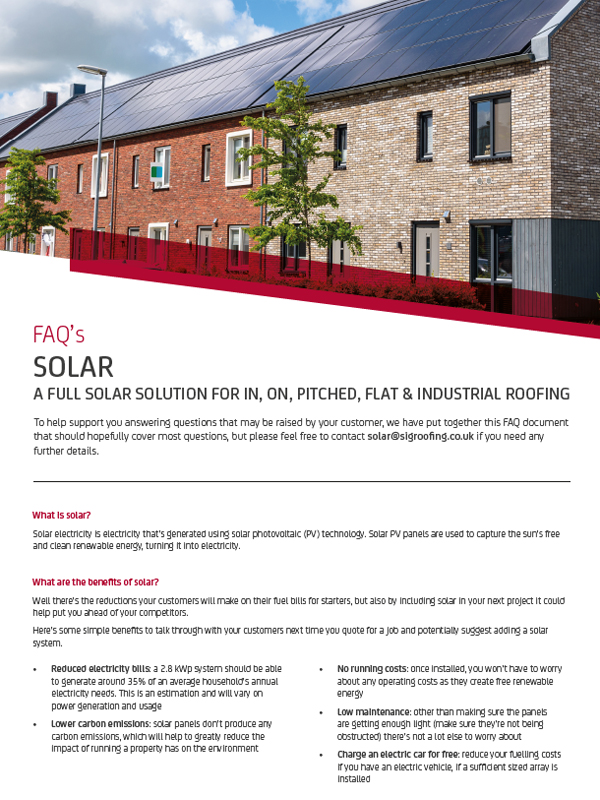What is a Solar Inverter?
A solar inverter is at the heart of a PV system and is solely responsible for more operating functions than any other system component. Its basic function is to convert the direct current (DC) that solar panels create, into alternating current (AC) that is usable in homes and businesses.
Additionally, they maximise power output by continuously tracking the voltage of the solar array to identify the maximum power at which the modules can operate. They also make it possible for installers and end users to keep track of the power output via apps where they can view error codes, diagnostics, and power production information.
All inverters need to be sized correctly to the size of the PV array the strings need to be the correct length (no. of panels) to keep within the manufacturer recommended inverter voltage range and typically, larger inverters are designed to connect to three phase supplies and smaller units are designed for single phase applications. Size will generally be the biggest determining factor for inverter choice, but outside of size there are a variety of different types to consider.
String Inverters
The string inverter is where groups of panels are connected in strings and then to the inverter. The technical means by which solar energy is harvested from PV panels is a circuit in the inverter called a Maximum Power Point Tracker or MPPT. Smaller residential inverters have one or two MPPTs, and commercial inverters can have as many as 14 which enable more panels to be connected. Solar modules have internal impedances that vary throughout the course of a day depending on the level of irradiance on the module face and cell temperature. The MPPT constantly monitors the array voltage and current and attempts to drive the operating point of the inverter to the maximum power point of the array, resulting in the highest energy harvest.
There are an awful lot of functions of inverters and as such they are made up of many electronic parts, so they are more likely to fail than any other component of a PV system so it’s important to buy a good quality device and look out for warranties and warranty extensions. String inverters are generally quite cost effective in comparison to other options and there are many different brands, sizes and features available. But unfortunately, strings are limited in terms of output by their lowest performing panel which is where optimisation comes in.
Hybrid Inverters
A Hybrid inverter is an intelligent inverter that enables the storage of excess solar energy in a battery system for self-use. Hybrid inverters function like a common grid tie solar inverter but can generally operate in one of several different modes depending on the application, this includes battery backup mode which provides a limited level of backup power in the event of a blackout. Most hybrid inverters can also operate without a battery and function just like a grid tie solar inverter by exporting excess solar energy to the utility grid Hybrid inverters are a very affordable choice for average households who want to be more self-sufficient using solar and batteries but don’t intend on disconnecting from the grid and do not experience frequent blackouts.
Refer to our complete hybrid and battery storage review for a direct comparison of the various hybrid inverters and battery storage systems.
Most hybrid inverters can be programmed to function in four different modes:
- Grid-tie mode -Functions like a normal solar inverter (no battery)
- Hybrid mode – Stores excess solar energy during the day to be used in the evening to increase self-sufficiency.
- Backup mode – Functions like a normal solar inverter when the grid is connected and automatically switches to backup power mode during a grid outage.
- Off grid mode – Operates much like an off-grid inverter and uses excess solar to charge the battery and power the loads without a grid connection.
Optimisers
Optimised PV systems share similar principles to standard string inverter systems, where panels are connected in strings back to a centralised string inverter. But in this case, DC power optimisers, or MLPE (Module Level Power Electronics) are connected to each module to optimise voltage and current independently before pushing it back onto the string. This means each panel operates independently so the panels aren’t limited by the performance of neighbouring modules. For shaded roofs this is a no brainer, but it does come at an additional cost along with a more involved replacement process. Optimisers are available to add on to modules or come built in.
Optimised PV systems share similar principles to standard string inverter systems, where panels are connected in strings back to a centralised string inverter. But in this case, DC power optimisers, or MLPE (Module Level Power Electronics) are connected to each module to optimise voltage and current independently before pushing it back onto the string. This means each panel operates independently so the panels aren’t limited by the performance of neighbouring modules. For shaded roofs this is a no brainer, but it does come at an additional cost along with a more involved replacement process. Optimisers are available to add on to modules or come built in.
Microinverters
A microinverter could be considered like an optimised system, but without the centralised PV inverter. Instead of using DC power optimisers, ‘micro’ inverters are connected to each module and convert DC to AC at roof level. They can cost more than other systems, but they promote high levels of safety as there is no need to bring any DC cabling into the property. Also, they are rated lower than string inverters and with a lower operating temperature, microinverters aren’t prone to the same failures, so often have longer lifespans and warranties.
How much could you save?
The key question we all ask when it comes to Solar Panels. At SIG Roofing, whether you’re a homeowner, an installer or a roofer, we’ve made it simple for you to find out.
Using our unique mapping tool, get a personalised estimate, see the panels on the roof of your choice and importantly, see how long it takes for a solar setup to pay for itself.
What is battery storage?
Battery storage technologies are essential to speeding up the replacement of fossil fuels with renewable energy. Battery storage systems will play an increasingly pivotal role between green energy supplies and responding to electricity demands.
Battery storage, or battery energy storage systems (BESS), are devices that enable energy from renewables, like solar and wind, to be stored and then released when the power is needed most.
Lithium-ion batteries, which are used in mobile phones and electric cars, are currently the dominant storage technology for large scale plants to help electricity grids ensure a reliable supply of renewable energy.
Why is battery storage important and what are its benefits?
Battery storage technology has a key part to play in ensuring homes and businesses can be powered by green energy, even when the sun isn’t shining or the wind has stopped blowing.
For example, the UK has the largest installed capacity of offshore wind in the world, but the ability to capture this energy and purposefully deploy it can increase the value of this clean energy; by increasing production and potentially reducing costs.
Everyday engineers at National Grid and electricity grids worldwide must match supply with demand. Managing these peaks and troughs becomes more challenging when the target is to achieve net zero carbon production. Fossil-fuel fired plants have traditionally been used to manage these peaks and troughs, but battery energy storage facilities can replace a portion of these so-called peaking power generators over time.
The UK government estimates technologies like battery storage systems – supporting the integration of more low-carbon power, heat and transport technologies – could save the UK energy system up to £40 billion ($48 billion) by 2050, ultimately reducing people’s energy bills.
Prescott Hartshorne, a Director at National Grid Ventures in the US, says: “Storage enables further renewable generation, both from an operational and reliability perspective. It’s also a key piece of our utility customers’ ongoing evolution and transition to renewables.”
How exactly does a battery storage system work?
Battery energy storage systems are considerably more advanced than the batteries you keep in your kitchen drawer or insert in your children’s toys. A battery storage system can be charged by electricity generated from renewable energy, like wind and solar power.
Intelligent battery software uses algorithms to coordinate energy production and computerised control systems are used to decide when to store energy or to release it to the grid. Energy is released from the battery storage system during times of peak demand, keeping costs down and electricity flowing.
This article is concerned with large-scale battery storage systems, but domestic energy storage systems work on the same principles.
Contact us
For more details on the range of solar solutions for your next project contact us on: [email protected]



